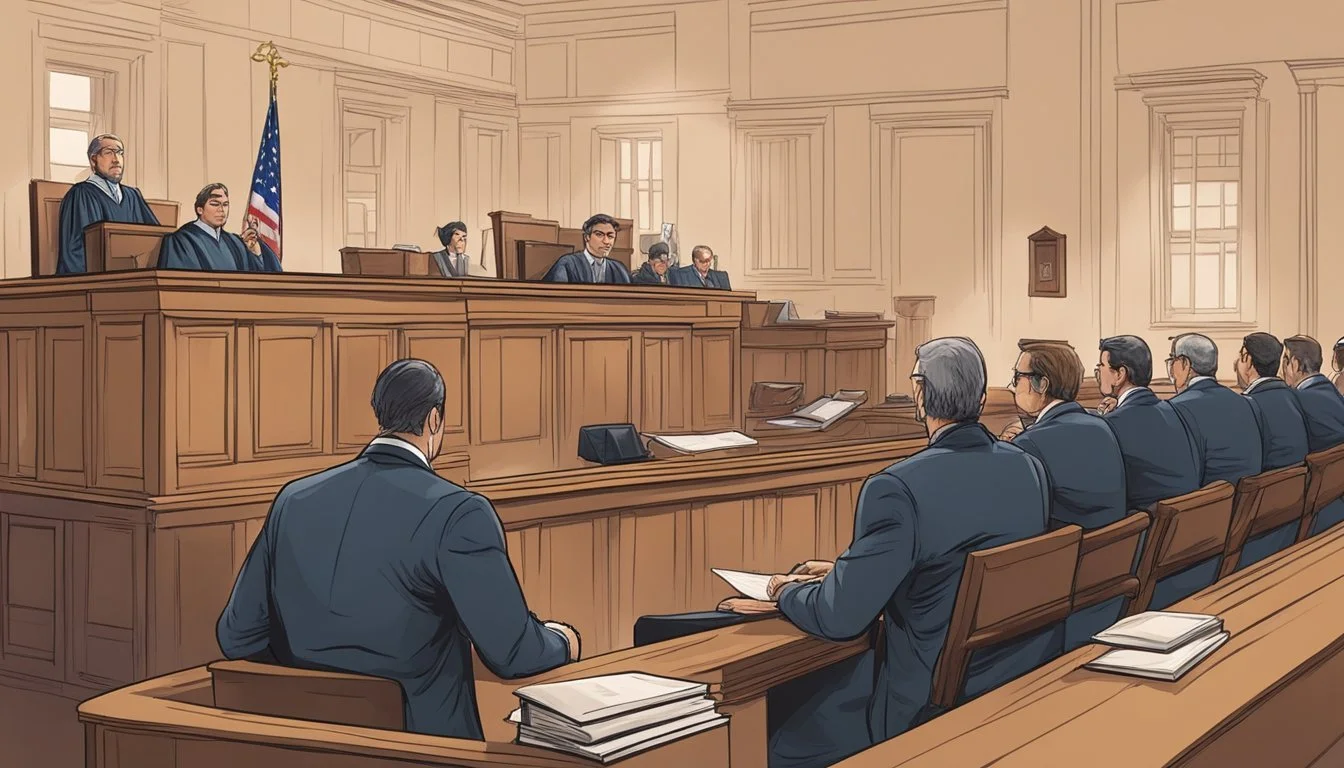Stephen Glass: The Fabricator Who Shook The New Republic
A Journalistic Scandal Exposed
Stephen Glass rose to prominence as a young journalist at The New Republic in the mid-1990s. His compelling articles captivated readers and impressed editors with their vivid details and exclusive scoops. However, Glass's meteoric rise came to an abrupt end in 1998 when it was discovered that he had fabricated numerous stories.
An internal investigation by The New Republic revealed that the majority of Glass's articles contained false information or were entirely fictitious. His deceptions ranged from inventing quotes and sources to crafting elaborate scenarios that never occurred. The scandal sent shockwaves through the journalism world and raised serious questions about fact-checking processes and editorial oversight.
Glass's downfall became a cautionary tale in media ethics. His story inspired books, articles, and even a Hollywood film titled "Shattered Glass." In the years since, Glass has expressed remorse for his actions and attempted to rebuild his life outside of journalism. The impact of his fabrications continues to resonate in discussions about journalistic integrity and the importance of truth in reporting.
The Rise of Stephen Glass
Stephen Glass quickly ascended in the world of journalism, going from college publications to one of the most prestigious magazines in Washington D.C. His talent for crafting compelling stories caught the attention of editors and readers alike.
Background and Early Career
Stephen Glass was born on September 15, 1972. He showed an early aptitude for writing and journalism during his time at the University of Pennsylvania. Glass served as executive editor of The Daily Pennsylvanian, the university's student newspaper.
His writing skills and ambition were evident from the start. Glass contributed articles to various publications while still a student. He wrote for Policy Review and Harper's, gaining valuable experience in the competitive world of journalism.
After graduating, Glass briefly attended law school at Georgetown University. However, his passion for writing led him to pursue a career in journalism full-time.
Joining The New Republic
In 1995, at the age of 23, Glass joined The New Republic as an editorial assistant. His talent for crafting vivid, attention-grabbing stories quickly became apparent.
Glass rapidly climbed the ranks at the magazine. He was promoted to staff writer and became a regular contributor of feature articles. His pieces were known for their colorful details and seemingly insider access to exclusive events and people.
Editors and readers alike were captivated by Glass's storytelling abilities. His articles often became the talk of Washington D.C., covering topics from young conservative activists to computer hackers.
By 1998, Glass was a rising star in journalism. He had published articles in Rolling Stone and George, in addition to his work at The New Republic. At just 25, he was one of the most sought-after young reporters in the nation's capital.
The Fabrications Unveiled
Stephen Glass's web of deception at The New Republic began to unravel in 1998, leading to a shocking revelation of widespread journalistic fraud. His fabrications ranged from minor embellishments to entirely fictional stories, ultimately resulting in his dismissal from the magazine.
Discovery by Forbes
Adam Penenberg, a reporter at Forbes Digital Tool, sparked the investigation into Glass's work. He attempted to fact-check Glass's article "Hack Heaven" but found no evidence to support its claims. Penenberg discovered that Jukt Micronics, the company featured in the story, didn't exist.
The article described a teenage hacker extorting money from a corporation. Glass had created fake websites and voicemails to support his fabrication. Penenberg's diligent research exposed the elaborate hoax, raising serious questions about Glass's credibility.
Extent of Fabrications
Glass's deceptions were far-reaching. He had fabricated quotes, sources, and entire events in numerous articles. Some of his most notorious fabrications included:
A fictional first-person account of working as a phone psychic
A made-up story about a conservative political convention
Invented anecdotes about taxi drivers and waiters
Glass often used fake business cards and notes to support his false narratives. He manipulated fact-checkers by providing false contact information for non-existent sources.
Internal Investigation and Firing
The New Republic launched a thorough internal investigation following the Forbes exposé. Editors scrutinized Glass's past work, uncovering a pattern of deception. They found that 27 of his 41 published articles contained partial or complete fabrications.
Glass initially attempted to maintain his lies, even creating a fake website to support "Hack Heaven." However, the evidence against him was overwhelming. The New Republic fired Glass in May 1998, ending his career at the magazine.
The scandal rocked the journalism world, leading to increased scrutiny of fact-checking processes. Glass's story later inspired the 2003 film "Shattered Glass," which dramatized his downfall.
Legal and Professional Aftermath
Stephen Glass faced significant hurdles in his attempts to rebuild his career after his journalism scandal. His efforts to enter the legal profession were met with controversy and opposition.
Bar Exam Controversies
Glass passed the New York bar exam in 2000 but withdrew his application for admission after facing character and fitness scrutiny. He then moved to California, where he graduated from law school in 2006 and passed the state bar exam. Glass applied for admission to the California State Bar in 2007. His application was denied due to concerns about his moral character stemming from his past fabrications.
California Supreme Court Decision
In 2014, the California Supreme Court unanimously rejected Glass's bid for a law license. The court ruled that Glass had not fully rehabilitated himself and still posed a risk to the public and legal profession. They cited his lack of candor during the application process and insufficient efforts to make amends for his past misconduct.
Post-Journalism Career
After his journalism career ended, Glass worked as a paralegal at a Beverly Hills law firm. He also authored a novel, "The Fabulist," loosely based on his experiences. Glass later pursued a career as a contract paralegal. He has occasionally given talks about ethics to journalism students and organizations. Despite these efforts, Glass has struggled to fully overcome the stigma of his past fabrications and gain acceptance in professional fields.
Cultural Impact
Stephen Glass's fabrications and their aftermath left an indelible mark on journalism and popular culture. His story sparked discussions about ethics, accountability, and trust in media.
Film Adaptation
"Shattered Glass," a 2003 film starring Hayden Christensen as Stephen Glass, brought the scandal to a wider audience. The movie depicted Glass's rise and fall at The New Republic, focusing on his deceptions and their eventual unraveling. It portrayed Charles Lane, then-editor of the magazine, as a key figure in exposing Glass's lies.
The film received critical acclaim for its portrayal of journalistic integrity and the pressures of the publishing world. It served as a cautionary tale for aspiring journalists and reinforced the importance of fact-checking and editorial oversight.
Literature and Media Analysis
Glass's story inspired various books and articles examining journalistic ethics and the psychology of deception. "The Fabulist," a novel by Glass himself, offered a fictionalized account of his experiences. It sparked debate about the ethics of profiting from past misdeeds.
Media analysts and journalism schools frequently use the Glass case as a study in ethical breaches and their consequences. It has become a cornerstone in discussions about journalistic integrity, the dangers of fabrication, and the responsibility of publications to their readers.
Ethics in Journalism
The Glass scandal prompted news organizations to reevaluate their fact-checking processes and ethical guidelines. Many publications implemented stricter verification procedures and emphasized the importance of source documentation.
The case highlighted the potential pitfalls of relying too heavily on a single reporter's work, especially when it seems too good to be true. It underscored the need for a culture of accountability within newsrooms and the importance of editors in maintaining journalistic standards.
Glass's story continues to serve as a powerful reminder of the lasting damage that can result from journalistic fraud and the critical role of truth in maintaining public trust in the media.
Personal Reflection and Public Response
Stephen Glass's fabrication scandal sparked intense debate about journalistic integrity and the possibility of redemption. His attempts at apology and rehabilitation met with mixed reactions from colleagues and the public.
Glass's Apology and Later Interviews
Glass issued a public apology in 2003, expressing remorse for his actions. He admitted to fabricating numerous articles and deceiving his colleagues. In subsequent interviews, Glass discussed his motivations, citing a desire for attention and approval.
He described undergoing therapy to address underlying issues. Glass emphasized his efforts to make amends, including personally apologizing to those he had wronged.
Public Perception and Colleague Reactions
Many journalists remained skeptical of Glass's sincerity. Former colleagues expressed feelings of betrayal and questioned whether he could be trusted again. Some viewed his apologies as self-serving attempts to rehabilitate his image.
Others saw Glass's case as a cautionary tale about the pressures of journalism. The scandal prompted discussions about fact-checking processes and ethical standards in newsrooms.
Debate on Rehabilitation and Forgiveness
Glass's attempts to rebuild his life sparked debate about second chances. He pursued a legal career but faced challenges due to character and fitness requirements. Some argued that his transgressions were too severe to forgive, while others believed in the possibility of redemption.
The case raised questions about the long-term consequences of journalistic misconduct. It highlighted the tension between accountability and compassion in professional ethics.
Legacy and Lessons Learned
Stephen Glass's fabrication scandal left an indelible mark on journalism, prompting significant changes in industry practices and raising important questions about ethics and integrity.
Impact on Journalism Practices
Glass's deceptions exposed vulnerabilities in fact-checking processes at major publications. The New Republic and other outlets implemented stricter verification protocols in response. Editors began requiring more thorough documentation from writers, including contact information for sources and raw interview notes. Publications also increased scrutiny of freelance contributors and their work.
Fact-checking departments expanded at many magazines. The New York Times and other newspapers created public editor positions to address reader concerns and maintain transparency. These changes aimed to rebuild trust and prevent future fabrication scandals.
Integrity and Verification
The Glass affair underscored the importance of journalistic integrity and rigorous fact-checking. Publications invested in digital tools to verify claims and cross-reference sources. Editors placed renewed emphasis on corroborating key details, especially for sensational or exclusive stories.
Some outlets adopted policies requiring multiple source confirmation for sensitive information. Fact-checkers gained more authority to challenge writers and demand evidence. The incident sparked ongoing debates about balancing speed and accuracy in the digital age.
Moral Character in Professional Circles
Glass's attempts to join the legal profession raised questions about moral fitness and redemption. His repeated California bar application rejections highlighted how past ethical breaches can have long-lasting consequences on one's career prospects.
The case prompted discussions in journalism schools and newsrooms about cultivating a culture of honesty. Some argued for more ethics training in journalism programs. Others emphasized the need for stronger mentorship to guide young reporters.
Glass's story serves as a cautionary tale, demonstrating how a loss of credibility can permanently damage one's professional reputation.





